Ancient Kyoto
Ancient Kyoto, once the capital of Japan, is a city filled with history and culture. It’s famous for its beautiful temples, traditional wooden homes, and lovely gardens, which all showcase Japan’s rich past. Visitors can enjoy various cultural experiences like tea ceremonies, special multi-course meals known as kaiseki, and seasonal festivals that highlight Japan’s lasting traditions. Kyoto plays an important role in connecting Japan’s historical roots to its modern life.
Table of Contents
Where is the location of Ancient Kyoto?
Ancient Kyoto is a beautiful city in Japan, located near the country’s eastern coast. It has the Sea of Japan to the north and the Pacific Ocean to the south. The city is surrounded by three mountains, which add to its scenic views. Kyoto is about 50 kilometers (31 miles) northeast of Osaka, another important city in the same region. It’s also close to Nara and Kobe, making it part of a culturally rich area in Japan that’s worth exploring.
Inscription of Ancient Kyoto
Ancient Kyoto’s recognition as a UNESCO World Heritage Site highlights its incredible history. This city in Japan is famous for its many historical sites, including beautiful temples, shrines, and gardens. These landmarks reflect Kyoto’s past as Japan’s capital and are celebrated for their cultural importance and stunning architecture. Being listed by UNESCO shows how significant these attractions are to Japan and the world.
In 1994, UNESCO designated several sites in Kyoto as World Heritage Sites, naming them “Ancient Kyoto (Kyoto, Uji, and Otsu Cities).” This recognition emphasizes Kyoto’s significance as Japan’s cultural center and its dedication to maintaining crucial elements of Japanese history, religion, and culture.
What is the history of Ancient Kyoto?
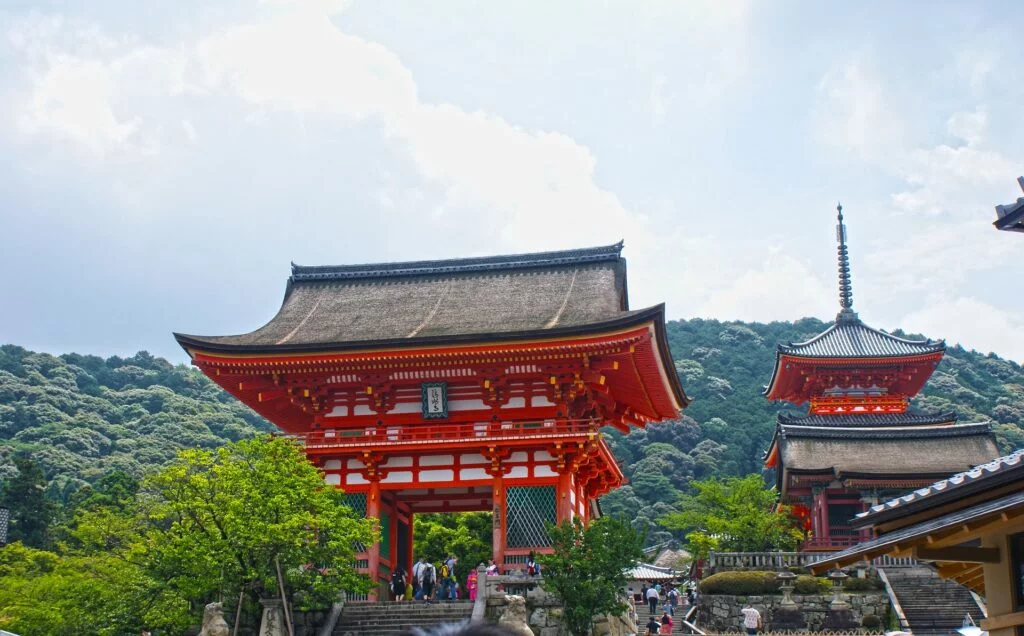
Ancient Kyoto was built in AD 794 and designed to look like the ancient capital of China. It became the imperial capital of Japan and held that title until the middle of the 19th century. The historical monuments of ancient Kyoto, located in the cities of Kyoto, Uji, and Otsu, are made up of seventeen notable sites in Kyoto Prefecture and Shiga Prefecture. Most of these sites include important religious buildings, except Nijo Castle. Together, these sites cover a vast area of about 1,056 hectares, surrounded by a larger protective zone that spans 3,579 hectares.
The property features seventeen sections, which include 198 buildings and 12 gardens. Most of these structures were built or designed between the 10th and 17th centuries. That highlights how Japanese wooden buildings, particularly those used for religious purposes, have changed over time.
What is the Golden Pavilion? What is the Golden Pavilion famous for?

The Golden Pavilion, known as Kinkakuji or the Golden Temple, is a famous Zen Buddhist temple in Japan. Its official name is Rokuonji, which means “Deer Garden Temple.” This stunning site is one of the most popular and visited attractions in Japan, drawing people from all over the world. The top two floors of Kinkaku-ji, also known as the Golden Pavilion, are especially impressive because they are completely covered in gold leaf. That is what makes the temple so famous and visually striking. The structure has three levels, each featuring a different style of architecture.
The first level features a traditional Japanese architectural style known as Shinden, which emphasizes elegance and harmony with nature. The second level reflects the Buke style, associated with samurai culture, showcasing a more robust and functional design. Lastly, the third level is inspired by Chinese Zen, focusing on simplicity and tranquility.
Kinkaku-ji, also known as the Golden Pavilion, is a famous temple in Kyoto that is part of a UNESCO World Heritage Site, which means it’s recognized for its cultural significance. The original building was started around 1397 for the shogun Ashikaga Yoshimitsu as a place to relax after his retirement. The temple was rebuilt in 1955. It’s situated in a lovely garden designed in a traditional Muromachi style, showcasing the beauty of nature.
In front of the pavilion, there’s a large pond known as Kyōko-chi or the Mirror Pond. This beautiful pond, surrounded by trees, offers a picturesque setting, especially during the autumn and winter seasons. The way the golden sunlight reflects on the water at sunset makes it one of the most loved and photographed sights in Japan.
What is the Torii Gate?
The Torii Gate is a traditional Japanese structure often seen at the entrance of Shinto shrines. It serves as a special doorway, marking the transition from the everyday world to a sacred place. Torii gates are traditional structures often made from wood or stone. They consist of two vertical columns that are connected by two horizontal beams. The top beam typically has a gentle upward curve, giving the gate its distinctive shape. These gates are commonly found at the entrance of Shinto shrines in Japan, symbolizing the transition from the mundane to the sacred.
What is Troii Gate famous for?
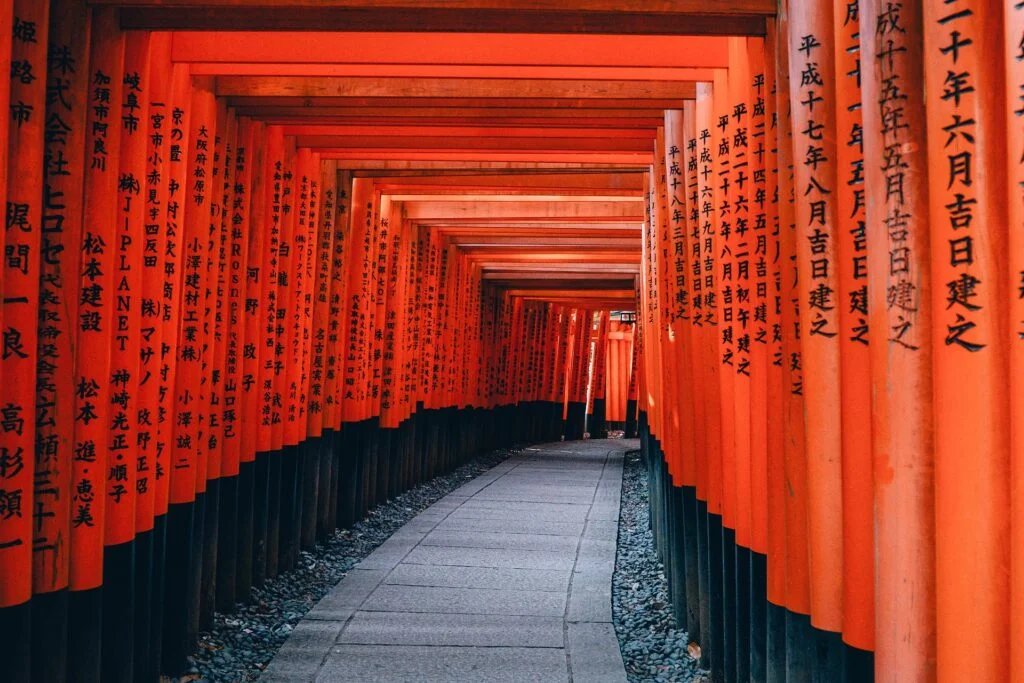
Fushimi Inari Taisha is an important and well-respected shrine in Japan. The shrine is famous for its striking red Torii gates, which represent the sun and the energy of life. You’ll also notice many fox sculptures throughout the area; these foxes are considered messengers for the deity Inari, who is worshipped here. Fushimi Inari Taisha is a well-known shrine in Kyoto, famous for its many bright red gates called Torii. These gates line the walking paths up Mount Inari, creating beautiful corridors that visitors can explore. Each gate is usually contributed by a person or a business, and each one has the name of its donor on it.
What is Kyoto Bamboo Forest famous for?
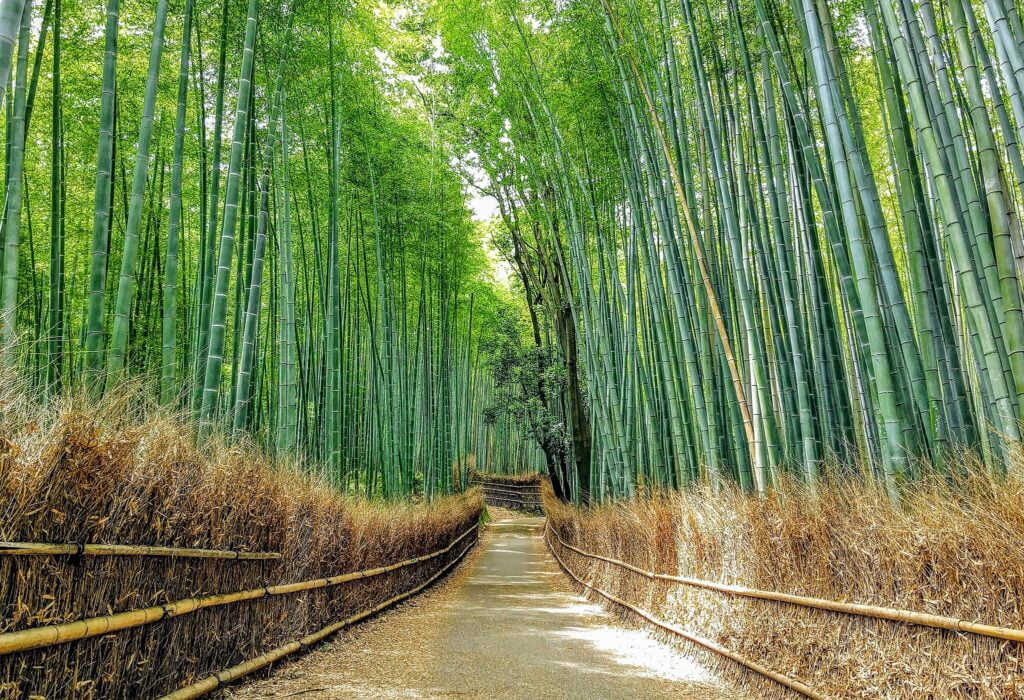
The Kyoto Bamboo Forest, also known as the Arashiyama Bamboo Grove, is a beautiful and enchanting place located on the outskirts of Kyoto, Japan. This stunning bamboo forest is popular among both tourists and locals who come to enjoy its peaceful and otherworldly atmosphere. Visitors can stroll through the soaring bamboo stalks, feeling a sense of calm and wonder as they take in the natural beauty around them.
The tall bamboo plants in the forest create a beautiful roof overhead. As you walk along the winding paths, you can hear the calming sound of the bamboo leaves softly rustling and the tall stalks swaying. That creates a very peaceful and relaxing atmosphere, perfect for taking a moment to unwind and enjoy nature.
The Arashiyama Bamboo Grove is often described as a calm and tranquil place. It’s so special that the Japanese Ministry of the Environment has recognized the unique sounds of the bamboo swaying in the wind, including a list of “100 Soundscapes of Japan.”
The woodland area is close to popular attractions in Arashiyama, including the Tenryu-ji Temple, the Togetsukyo Bridge, and the Iwatayama Monkey Park. These sights make Arashiyama a great spot for a day visit.
Culture and Architecture of Ancient Kyoto
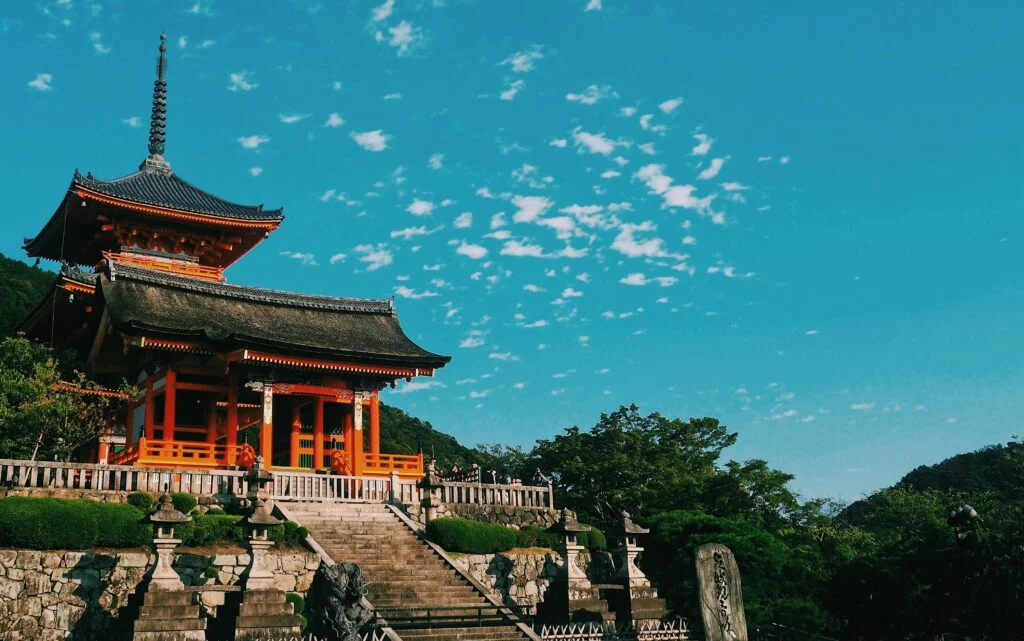
Between the 8th and 17th centuries, Kyoto played a key role in shaping both religious buildings and everyday structures, as well as designing beautiful gardens. This period significantly influenced Japanese cultural traditions. The unique style of these gardens became well-known and appreciated around the world, especially starting in the 19th century.
Ancient Kyoto was Japan’s cultural center and imperial capital for centuries until the mid-1800s. It has seen the development of traditional wooden buildings, especially those used for religious purposes, as well as the art of Japanese gardens, which has influenced how gardens around the world are designed.
These gardens are known for their peaceful beauty and careful planning, and they have significantly impacted garden design around the world. That reflects the deep cultural heritage of Japan.
What is the Ancient Kyoto famous for?
Kyoto, an ancient city in Japan, is celebrated for its rich cultural history and beautiful temples. Once the capital of Japan, it boasts many important sites recognized by UNESCO, such as the stunning Golden Pavilion (Kinkaku-ji) and the tranquil Ryoan-ji garden. Visitors can explore charming neighborhoods like Gion and Higashiyama, which showcase traditional wooden buildings. Kyoto is also famous for its lovely gardens, traditional tea ceremonies, and vibrant seasonal festivals, making it a wonderful place to experience the essence of Japanese culture.
Why do we need to preserve Ancient Kyoto significantly for us and future generations?
Preserving Ancient Kyoto is crucial for several reasons. First, it is a cultural treasure that embodies Japan’s history, traditions, and artistic achievements. The city’s unique architecture, temples, and gardens reflect the aesthetic values and spiritual practices of past generations. Second, Ancient Kyoto serves as an educational resource, offering insights into historical lifestyles, practices, and philosophies that can inspire future generations.
Additionally, maintaining this heritage fosters a sense of identity and community between residents and visitors alike. Finally, it contributes to sustainable tourism, as preserving the city’s charm can attract visitors without overwhelming its resources. This commitment to preservation ensures that both current and future generations can admire and learn from the cultural legacy of Ancient Kyoto.
Why should you visit Ancient Kyoto as a visitor?
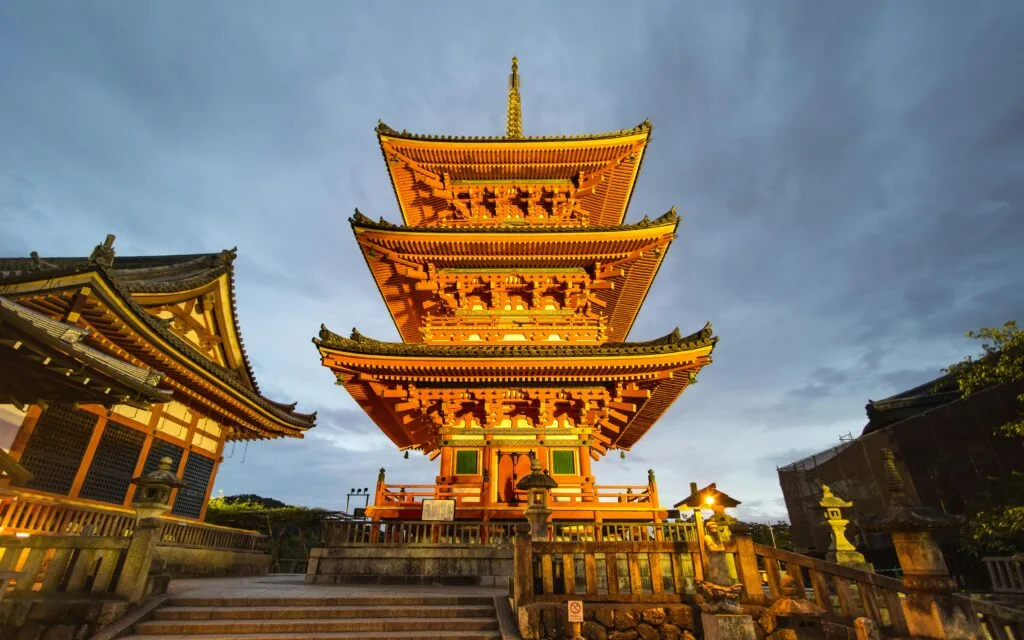
Visiting Ancient Kyoto offers a unique glimpse into Japan’s rich history and culture. The city is home to stunning temples, traditional wooden houses, and serene gardens that reflect centuries of artistry and philosophy. Exploring Kyoto allows you to experience the beauty of Japanese architecture, participate in tea ceremonies, and enjoy seasonal festivals. Additionally, the harmonious blend of nature with historical sites, like Arashiyama Bamboo Grove and Kinkaku-ji (the Golden Pavilion), makes it an unforgettable destination for anyone interested in history, art, and spirituality.
How can you experience traditional Japanese culture through local ceremonies and festivals?
Don’t miss the chance to immerse yourself in the timeless beauty of Ancient Kyoto! Plan your journey today to experience the city’s rich heritage, breathtaking landscapes, and unforgettable cultural experiences. Book your trip now and step into a world where history and tradition come alive!
When you’re planning your adventure, enhance your travel experience by using trusted websites like GetYourGuide and Trip.com! These platforms offer a variety of enjoyable tours, activities, and accommodation options to suit every traveler’s needs.
- GetYourGuide offers a wide variety of unforgettable travel experiences. You can choose from tickets to Popular Attractions, Transportation Options, City Passes, Guided Tours, Hop-on Hop-off Bus Services, Water Activities, Day trips, and Trips that last several days in many locations around the world.
- Trip.com makes it easy to combine Flights and Hotels, Trains, Car Rentals, Airport Transfers and Attractions & Tours to create the perfect travel package tailored just for you.
Start your journey with our reliable travel partners and unlock the best of Ancient Kyoto and beyond!
Disclaimer
In this post, affiliate links are included and those links are associated with well-known travel companies such as GetYourGuide and Trip.com. If you choose to purchase or book a service using those links, we may earn a commission at no additional cost to you. We focus on recommending products and services that are helpful to you and we appreciate your support!
Conclusion
We hope you find this information helpful for your next trip. If you want to learn more, check out our other travel blog posts. We cover many topics, including amazing places to visit and helpful travel tips. Whether you’re looking for hidden gems, new cultures, or helpful advice, there’s something for everyone.
Additionally, If you enjoyed the information we shared, don’t forget to explore our other travel product reviews to make your journey even better! Please take a moment to look through our previous posts and let your sense of adventure guide you on your next journey! We wish you happy travels and look forward to sharing more with you in our next blog post!




